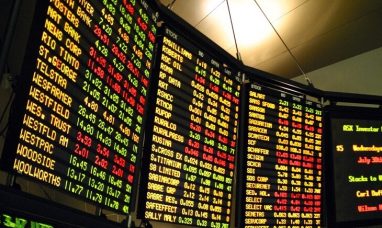The U.S. stock market faced a slow start on Tuesday, with indexes slipping amid rising bond yields and cautious trading. While the “Trump trade”—a surge in stocks following Donald Trump’s presidential win—boosted markets initially, momentum has cooled as investors assess the broader economic landscape. U.S. stock market performance has seen a mix of gains and pullbacks, reflecting ongoing shifts in policy and economic indicators.
Key Index Movements and Trends
The S&P 500 saw a slight decline of 0.1% by late afternoon, coming off a recent all-time high. The Dow Jones Industrial Average dropped by 259 points (a 0.6% dip), while the Nasdaq Composite hovered around its previous closing level. Although stock markets rallied post-election on the expectation of tax cuts and pro-growth policies, recent sessions reflect a more tempered optimism.
Small-cap stocks and domestic-focused companies that had previously benefitted from the “America First” rhetoric were notably impacted. The Russell 2000 Index, often viewed as a barometer for smaller U.S. stocks, slid 1.6%. Even larger corporations with ties to Trump’s policies, like Tesla (NASDAQ:TSLA)—led by Elon Musk, an ally of Trump—saw a pullback, with shares dropping over 5% in Tuesday’s trading.
Bond Yields and Inflation Concerns
A significant driver of Tuesday’s market hesitation was the rise in Treasury yields. The yield on the 10-year Treasury surged to 4.43%, up from 4.31% at the end of last week. This jump came after a pause in bond trading due to Veterans Day, with yields continuing their upward trajectory. Higher bond yields can pressure stock prices, particularly for growth-oriented stocks, as they often signal concerns about inflation or a potential slowdown in Federal Reserve rate cuts.
The Fed’s interest rate strategies, intended to curb inflation while maintaining job market growth, are closely monitored by investors. Despite progress in lowering inflation towards the Fed’s 2% target, there are still signs that inflationary pressures persist, partly due to policies emphasizing tariffs and heightened spending. These concerns can keep yields high and make future Fed rate cuts less certain.
Upcoming Inflation Report
Investors are also on edge about the upcoming Consumer Price Index (CPI) report, due on Wednesday. This report will offer insight into U.S. inflation trends for October. Economists predict a minor increase in inflation to 2.6%, up from September’s 2.4%. Core inflation, which excludes volatile categories like food and fuel, is anticipated to remain at 3.3%, signaling steady underlying pressures on prices.
Earnings Updates: Highlights and Setbacks
Amid broader market losses, several companies delivered strong quarterly earnings that outpaced analyst forecasts. Live Nation Entertainment (NYSE:LYV) reported robust summer earnings, fueled by high demand for concert tickets and anticipation for 2025 stadium tours for artists like Coldplay. Shares of Live Nation climbed by 4.7% on Tuesday, offering a bright spot in a mixed market.
Similarly, Tyson Foods (NYSE:TSN) saw a 7.7% increase in its stock price after reporting earnings that surpassed expectations and announcing a dividend increase. Despite challenges, consumer demand for Tyson’s beef, chicken, and pork products contributed to the company’s improved performance.
Meanwhile, Home Depot (NYSE:HD) posted stronger-than-expected profits but experienced a slight 0.3% dip in share price. The home improvement giant is grappling with reduced consumer spending on big-ticket home items, despite solid earnings.
Cryptocurrency and Global Markets
In the crypto space, Bitcoin surged to a new record high before settling near $89,000, according to CoinDesk. The cryptocurrency’s meteoric rise aligns with Trump’s advocacy for a “crypto-friendly” environment, pledging to make the U.S. a leading hub for digital assets. Bitcoin’s performance illustrates the volatile yet growing interest in digital currencies amid uncertain economic times.
Globally, stock markets faced similar challenges. Asian and European indexes largely trended downward, with Hong Kong’s Hang Seng Index dropping 2.8%, closing below 20,000 for the first time since China’s recent stimulus package announcement in September.
Looking Forward: Key Takeaways for Investors
The U.S. stock market’s recent fluctuations reveal the complex dynamics at play, with higher bond yields, potential inflationary pressures, and investor sentiment shaping market movements. As the Fed contemplates its next steps and economic indicators unfold, investors will continue to monitor these factors closely to inform their trading strategies.
Featured Image: Freepik © freepik







